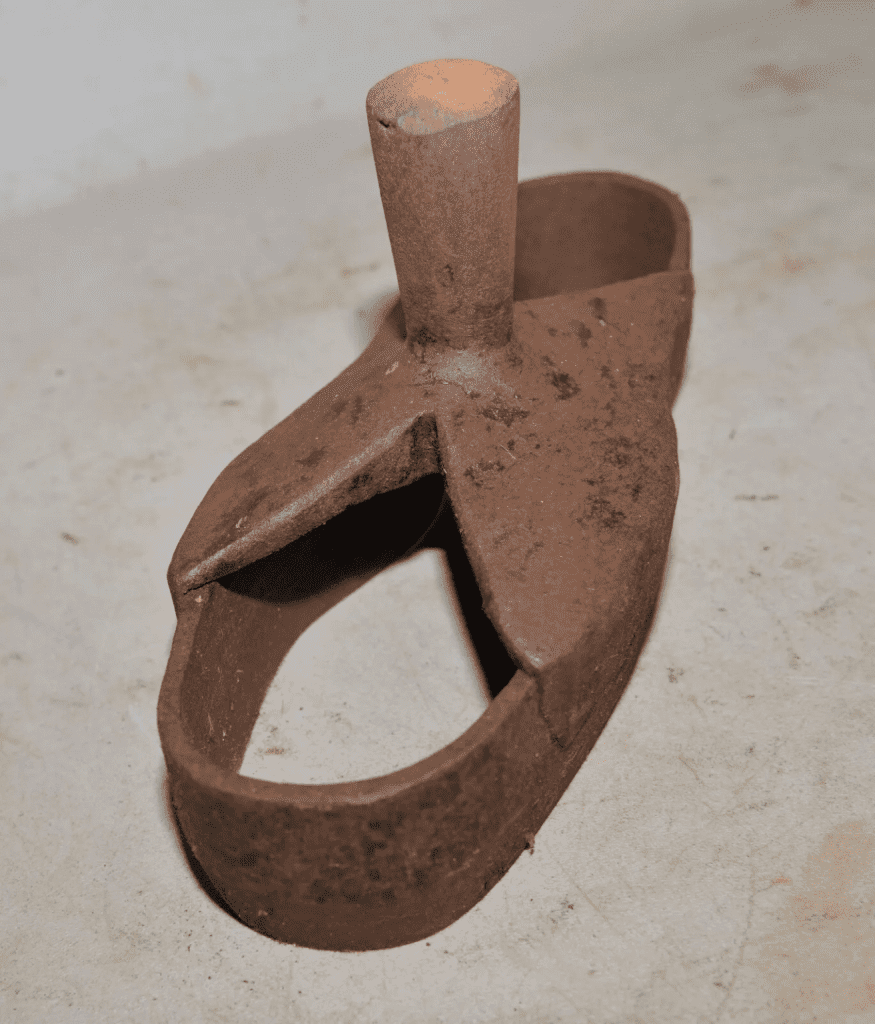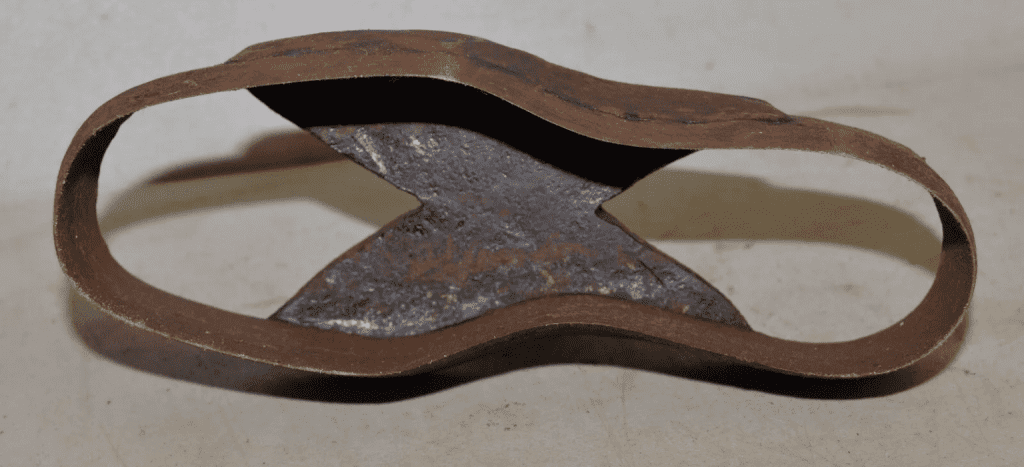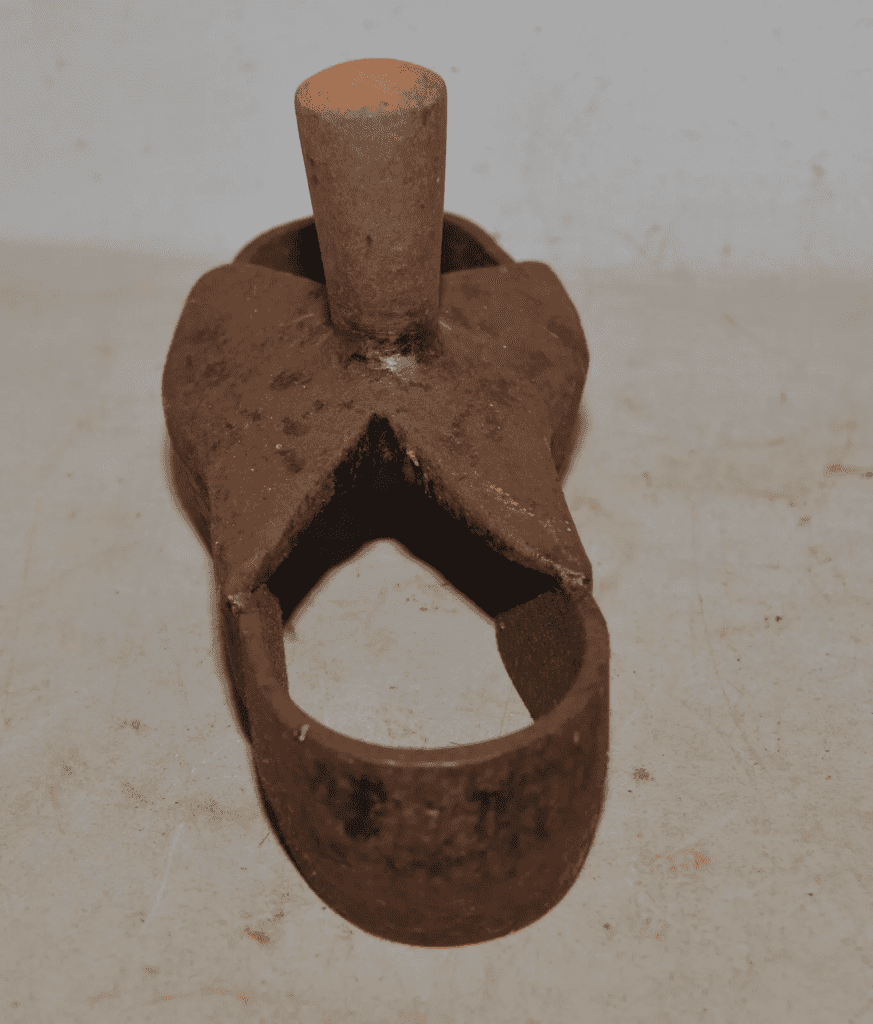In the early 19th century, when handmade shoes were the standard, the vintage steel shoe sole die cutter was a revolutionary tool that shaped the future of cobbling. Used extensively in shoemaking workshops, this tool allowed cobblers to cut leather into precise shapes for shoe soles, making the production process faster and more efficient. As the Industrial Revolution began to influence traditional trades like cobbling, tools like the steel shoe sole die cutter became even more significant, representing both innovation and craftsmanship. Today, it remains a treasured relic of a bygone era, appreciated by collectors and leatherworking enthusiasts alike.

The Role of the Steel Shoe Sole Die Cutter in Traditional Cobbling
The vintage steel shoe sole die cutter was a cornerstone in traditional shoemaking. For cobblers, precision was essential, and creating uniform shoe soles by hand was both time-consuming and labor-intensive. Before the advent of die cutters, cobblers had to rely on hand-cutting techniques, which made it difficult to ensure that each shoe sole was consistent in size and shape. The die cutter transformed this process.
How the Die Cutter Worked
This tool functioned by pressing a steel mold, known as a “die,” onto a sheet of leather or other durable materials used for shoe soles. Cobblers would position the die on the leather and either manually apply pressure or use a press to cut out perfectly shaped soles. This method was not only faster but also provided unmatched consistency, which was crucial as shoemakers sought to meet increasing customer demand.
By using a die cutter, cobblers could produce uniform soles that fit precisely with the uppers of shoes, reducing errors and improving the overall quality of the footwear. The tool’s ability to streamline production made it a critical asset in both small workshops and larger shoemaking operations.
The Rise of the Steel Shoe Sole Die Cutter During the Industrial Revolution
The early 19th century marked the dawn of the Industrial Revolution, a period that saw massive technological advancements in manufacturing. Trades like cobbling, which had relied on handcrafting techniques for centuries, began to adopt new tools and methods to keep pace with the growing demand for goods.
Mass Production and the Need for Efficiency
As cities grew and the population increased, the demand for affordable, durable shoes skyrocketed. The steel shoe sole die cutter became a vital tool in addressing this demand. While shoemaking remained a skilled craft, the die cutter allowed cobblers to produce shoes more quickly without sacrificing quality. The tool’s precision also reduced material waste, which was particularly important in an era when leather was expensive and highly valued.
Cobblers who embraced tools like the die cutter were able to compete with larger manufacturers, and for many, it marked the beginning of a shift toward mass production methods. While handmade shoes remained prized, tools like the steel shoe sole die cutter paved the way for a more efficient, scalable approach to shoemaking.
Usage in Leatherworking: Precision and Efficiency
The vintage steel shoe sole die cutter wasn’t just a tool for cobblers; it played a broader role in leatherworking as a whole. Leather was a versatile and durable material used in everything from shoes to belts, bags, and saddles. The die cutter’s ability to create precise cuts made it indispensable in workshops that produced a variety of leather goods.
The Art of Cutting Leather

Leatherworking requires not only skill but also the right tools to produce consistent, high-quality products. The die cutter gave leatherworkers the ability to make clean, uniform cuts quickly, saving time and effort compared to cutting by hand. By using a die cutter, leatherworkers could ensure that each piece was exactly the right size and shape, whether for a shoe sole, a belt strap, or another leather product.
The precision of the die cutter also contributed to less material waste, an important consideration when working with high-cost materials like leather. In a time when resources were often scarce and expensive, this tool was a game-changer for craftsmen looking to optimize their production process.
The Legacy of the Vintage Steel Shoe Sole Die Cutter in Modern Times
While modern shoemaking has largely transitioned to automated machinery, the legacy of the vintage steel shoe sole die cutter endures. Collectors, hobbyists, and leatherworking enthusiasts continue to admire and utilize these tools for their historical value and craftsmanship.

A Tool Cherished by Collectors
For collectors, vintage steel shoe sole die cutters represent more than just a tool; they are a window into the history of shoemaking and craftsmanship. These tools, often made from high-quality steel, are a testament to the skill and precision required in traditional cobbling. The intricate design of many die cutters, combined with their utilitarian purpose, makes them highly sought after by those who appreciate vintage tools and the history of trades like shoemaking.
CONTINUE READING…
Author: awestories24.com

